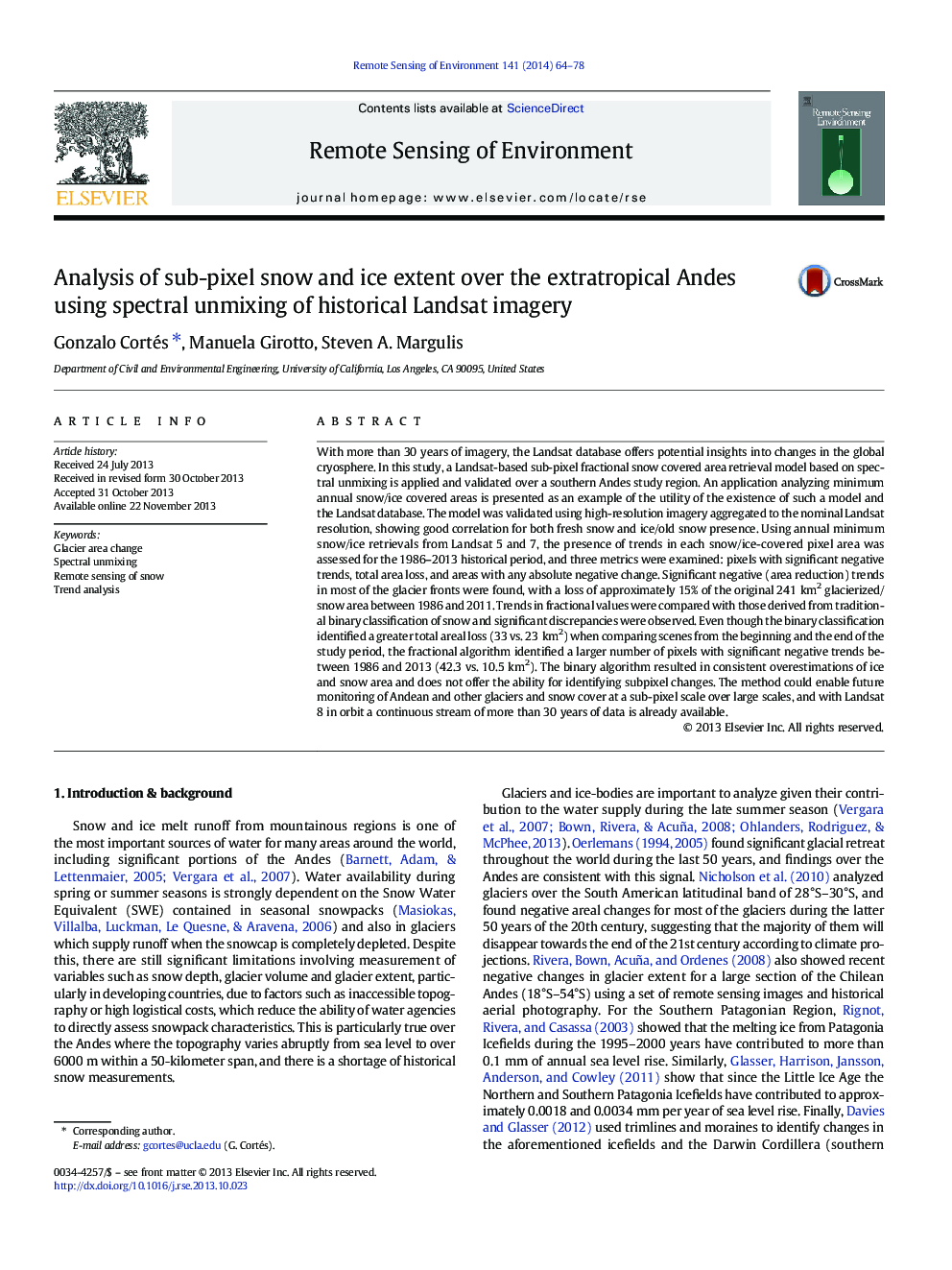| کد مقاله | کد نشریه | سال انتشار | مقاله انگلیسی | نسخه تمام متن |
|---|---|---|---|---|
| 6346813 | 1621259 | 2014 | 15 صفحه PDF | دانلود رایگان |
- The use of binary vs. sub-pixel retrievals renders different trend results.
- Binary retrievals render less robust results in areas with low sub-pixel cover.
- Analyzed glaciers experienced a significant decline in area since the 1980s.
- Trend magnitude decreases from negative to zero with increasing elevation.
With more than 30Â years of imagery, the Landsat database offers potential insights into changes in the global cryosphere. In this study, a Landsat-based sub-pixel fractional snow covered area retrieval model based on spectral unmixing is applied and validated over a southern Andes study region. An application analyzing minimum annual snow/ice covered areas is presented as an example of the utility of the existence of such a model and the Landsat database. The model was validated using high-resolution imagery aggregated to the nominal Landsat resolution, showing good correlation for both fresh snow and ice/old snow presence. Using annual minimum snow/ice retrievals from Landsat 5 and 7, the presence of trends in each snow/ice-covered pixel area was assessed for the 1986-2013 historical period, and three metrics were examined: pixels with significant negative trends, total area loss, and areas with any absolute negative change. Significant negative (area reduction) trends in most of the glacier fronts were found, with a loss of approximately 15% of the original 241Â km2 glacierized/snow area between 1986 and 2011. Trends in fractional values were compared with those derived from traditional binary classification of snow and significant discrepancies were observed. Even though the binary classification identified a greater total areal loss (33 vs. 23Â km2) when comparing scenes from the beginning and the end of the study period, the fractional algorithm identified a larger number of pixels with significant negative trends between 1986 and 2013 (42.3 vs. 10.5Â km2). The binary algorithm resulted in consistent overestimations of ice and snow area and does not offer the ability for identifying subpixel changes. The method could enable future monitoring of Andean and other glaciers and snow cover at a sub-pixel scale over large scales, and with Landsat 8 in orbit a continuous stream of more than 30Â years of data is already available.
Journal: Remote Sensing of Environment - Volume 141, 5 February 2014, Pages 64-78
